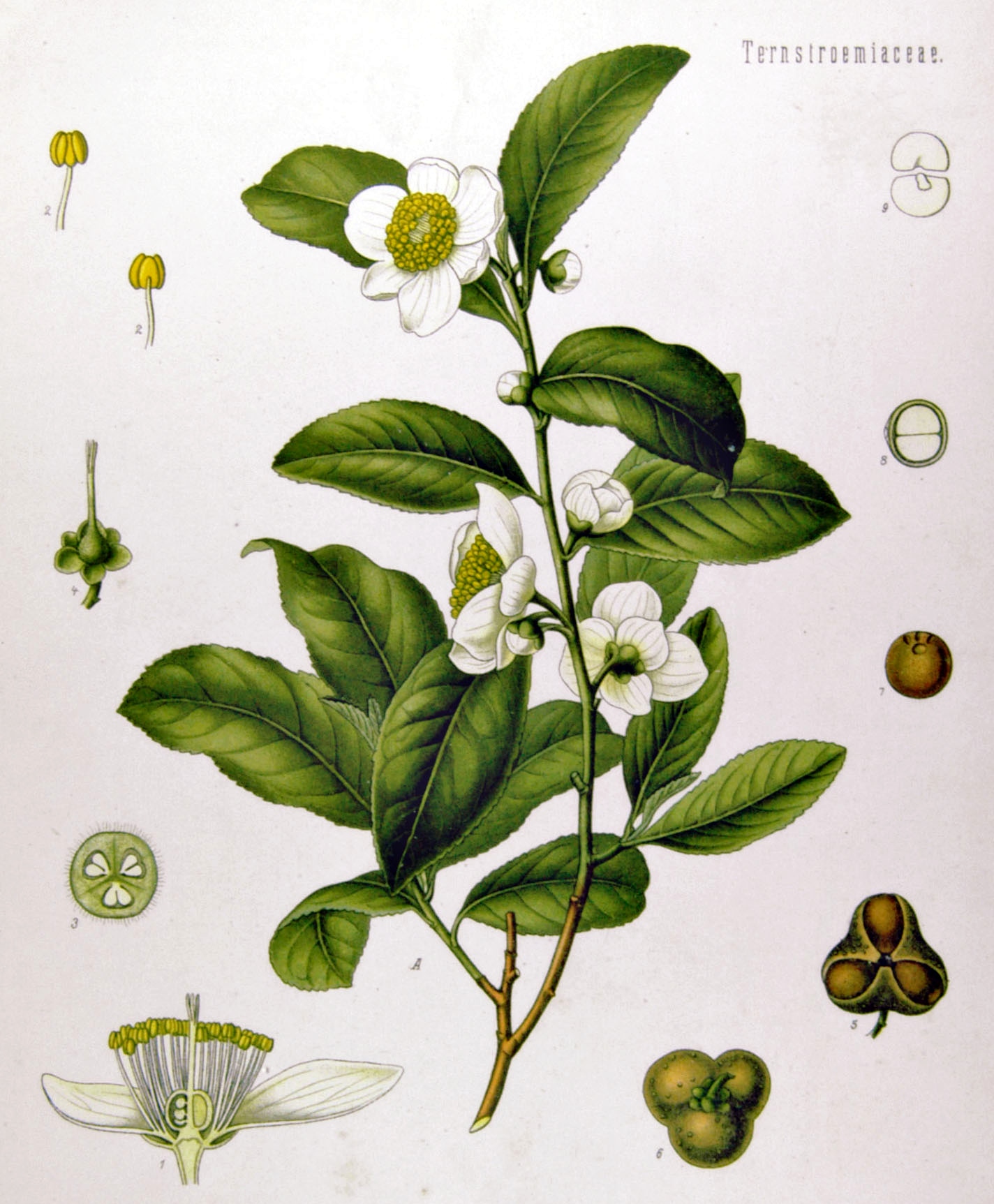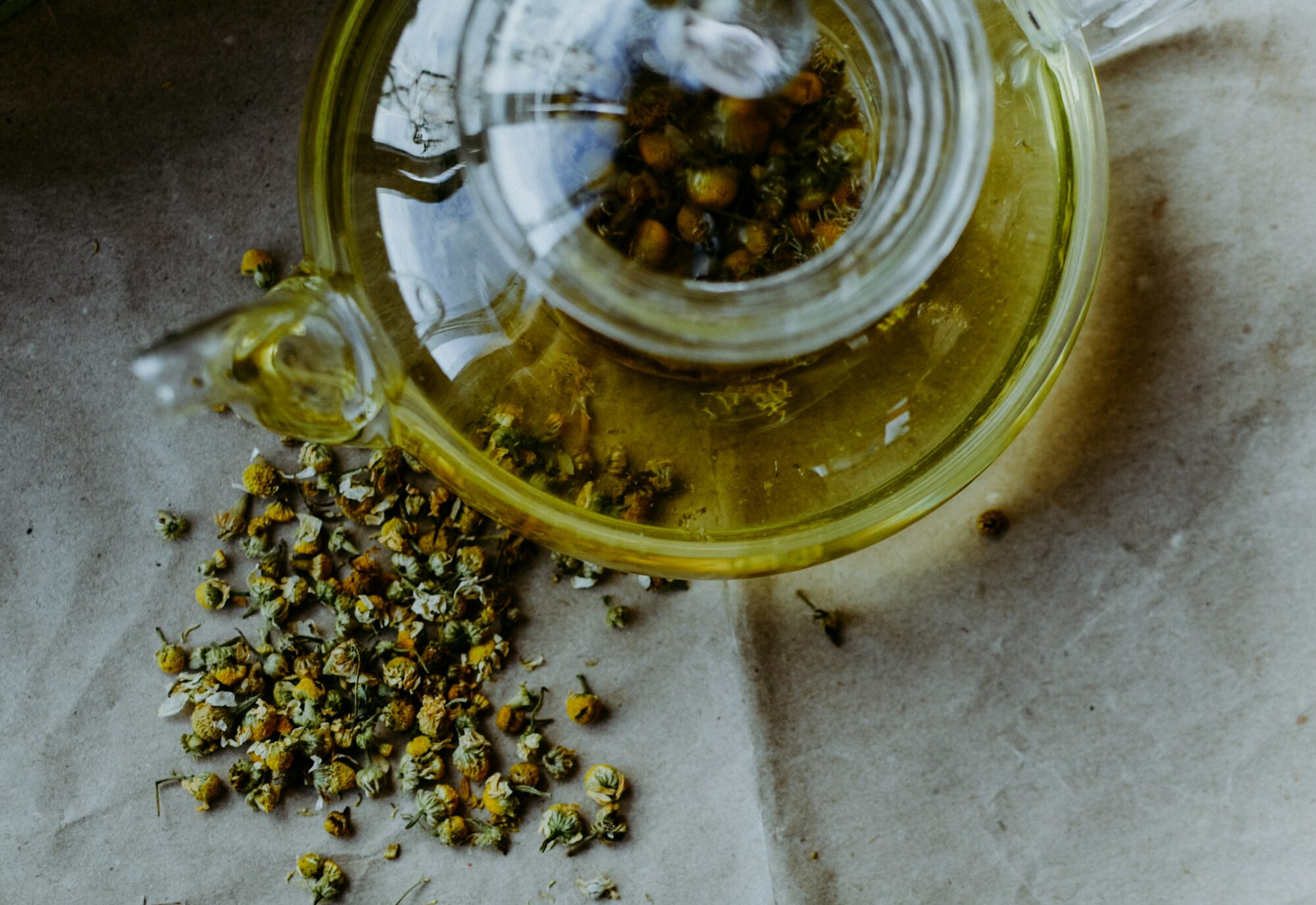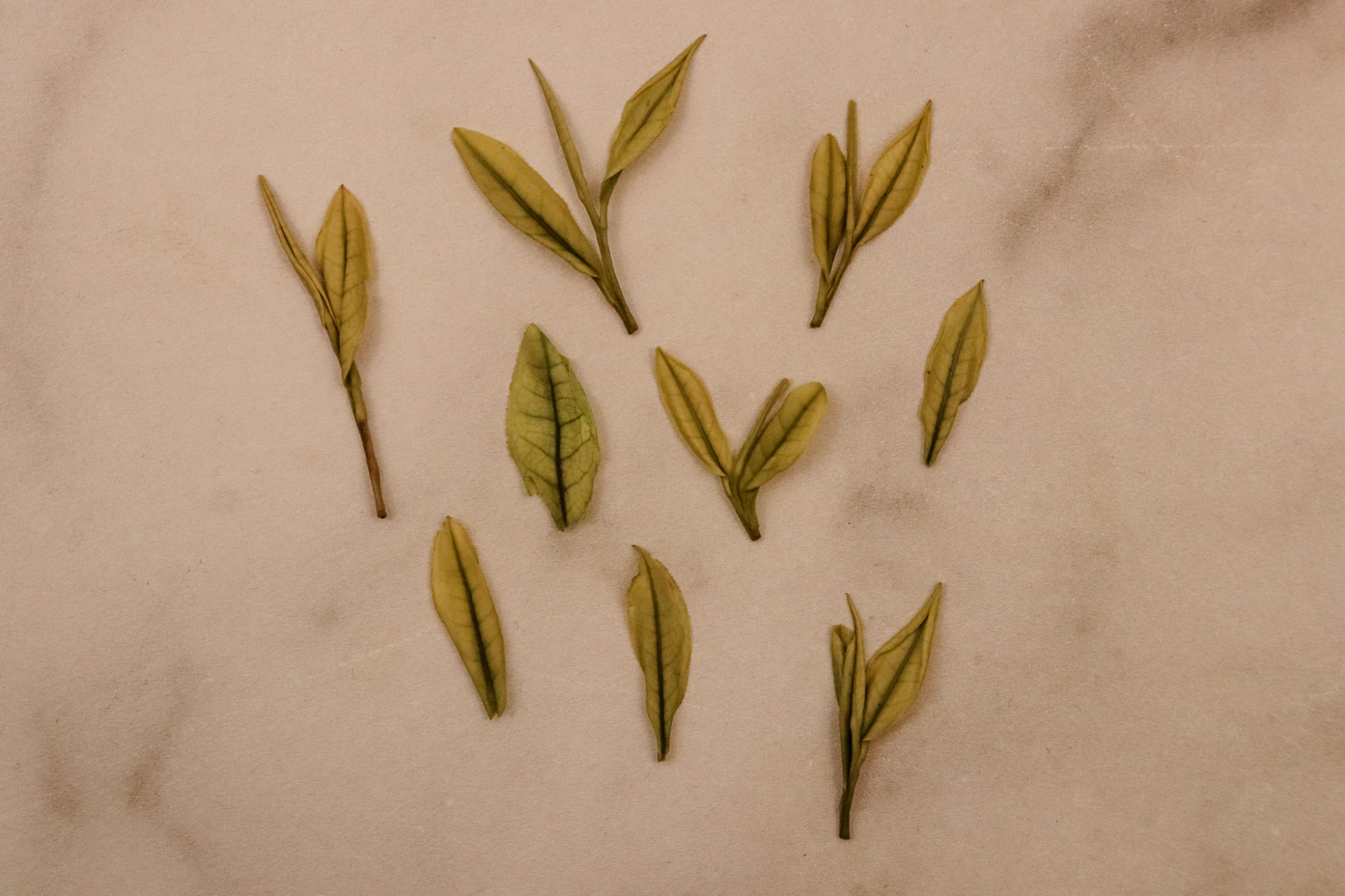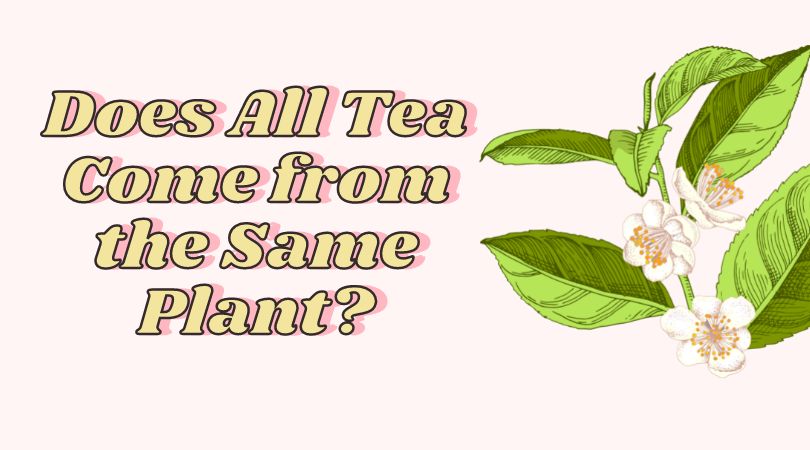The answer to this age-old question is…sort of. All tea comes from the same species of flowering evergreen, Camellia Sinensis. Contrary to popular belief, there is no such thing as a green tea plant or a black tea plant. The steps of processing that the leaves undergo determines what type of tea it becomes, oxidation being the most important. There are many varieties of Camellia but most are used as ornamental shrubbery.

About Camellia Sinensis

Camellia Sinensis is native to China, but can now be found growing all over the world. Even right here in the United States. It prefers a subtropical climate with plenty of rainfall and well-draining acidic soil. It can be cultivated from seed or cloned by stem cuttings. Camellia Sinensis typically blooms in the fall. The flowers are white or pink with 7-8 petals and yellow stamens.
When Tea isn’t Tea
Many other species of plants are commonly referred to as tea such as chamomile, peppermint, and rooibos. They are not technically tea because they are not made from the Camellia Sinensis plant. Shocking, I know! Botanicals, herbal infusions, or tisanes would be a more accurate term for these. That being said, I’m not one to tell people that their tea isn’t tea. It just comes across as snobby. Almost all herbal infusions are completely free of caffeine. Some notable exceptions to that rule are guayusa and yerba mate.

Sinensis vs Assamica
The two main taxonomic varieties used to make the tea that we drink are Camellia Sinensis var. Sinensis and Camellia Sinensis var. Assamica. Sinensis has smaller serrated leaves and prefers slightly cooler climates. It can grow to about six feet tall. Assamica has broader leaves with less serration and grows best in warmer climates. It is typically found in Assam and Yunnan. Left to grow in its natural state the Assamica tends to grow into a larger tree. It can get to be over 50 feet tall. The two varieties hybridize readily.
Cultivars
Within those two varieties, there is a lot of genetic diversity. You might hear the words variety or cultivar tossed about but what do they really mean? You can think of variety as a naturally occurring phenotype or observable trait. Cultivar refers to a variety that has been selectively cultivated by people.
Growers select the varieties they use for many reasons. Drought resistance and cold hardiness are both traits that may help improve production. The cultivar does not change if a plant is grown in a different place. Tie Guan Yin is still Tie Guan Yin if it is grown in Anxi, China and Muzha, Taiwan. That being said, the terroir where tea is grown does affect the taste.


This article is a brief overview meant to inspire further exploration. I find the best way to discover the different cultivars is to look them up each time you try a new one. There is no better way to learn than to taste your way through them all.
Additional Resources
- Japanese Tea Cultivar List – My Japanese Green Tea
- Varieties, Cultivars, Clones – oh my! – Tea Geek
- Teapedia – Cultivar
- Does All Tea Really Come From The Same Plant? – Seven Cups
This post was originally published on January 18th, 2016. It was revised and updated on September 19th, 2022.
Help Support This Site

Support my work in tea by joining my Patreon community. For $2-$5 a month you’ll receive access to exclusive behind-the-scenes content, my private Discord server, surprise quarterly packages, and more!
